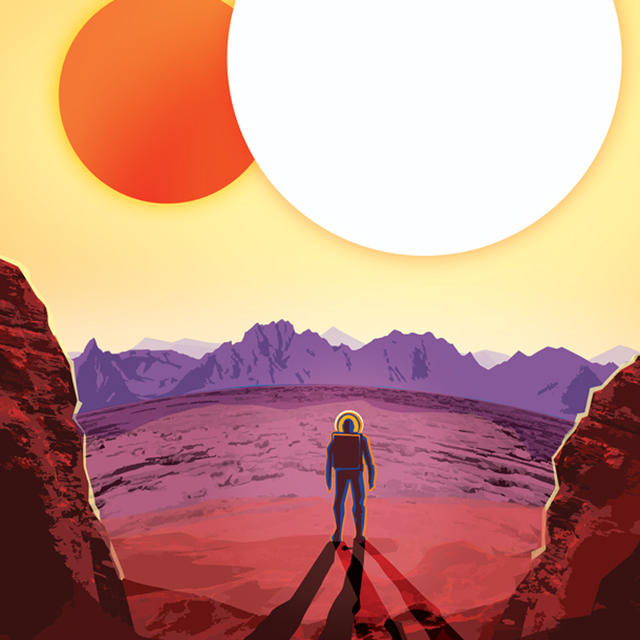Earlier this week, NASA announced huge news: Kepler, the planet-hunting space observatory, had just topped 1,000 exoplanets with the discovery of eight new planets. The new planets were especially exciting: they all orbit their respective stars in the so-called "Goldilocks" zone that makes them most likely to support life. Two of the planets are the most Earth-like exoplanets discovered.
In response, NASA's Jet Propulsion Lab decided to design three wonderfully retro-style travel posters for three of Kepler's exoplanets, the (imaginary) sales pitch of the Exoplanet Travel Bureau.

The three planets chosen are HD 40307g, Kepler-186f, and Kepler-16b. HD 40307g, the poster says, is "twice as big in volume as the Earth [that] straddles the line between 'Super-Earth' and 'mini-Neptune'." Because of this, it's got eight times the gravity of Earth. No wonder, then, that the Exoplanet Travel Bureau would try to entice skydivers there.
Then there's Kepler-186f. The first Earth-sized planet ever discovered in the Goldilocks zone of another star, it circles a star that is cooler and redder than our own. NASA speculates this means, if it does have plant life, it might actually be redder than green, leading the Exoplanet Travel Agency to give it the tag: "Where the grass is always redder on the other side!"
Last, there's Kepler-16b. It's a real-life Tatooine, and orbits two different stars. "The Land Of Two Suns," the poster copy extols."Where your shadow always has company!"
In execution, these remind me a lot of the work of Steve Thomas, who does the same style of travel posters for places within the solar system. With NASA behind these, though, I'm somehow a little more hopeful that the exotic travel destinations we're seeing here will someday be reachable.
All three posters are available for download from the Jet Propulsion Lab's website here.
[via Gizmodo]